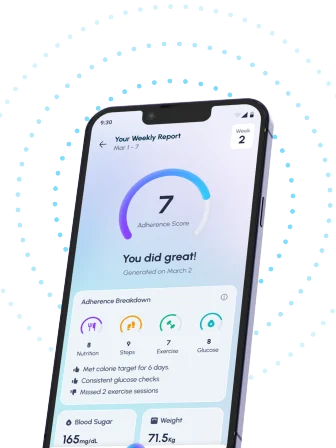Skin tags are small, soft, and usually harmless growths of skin that can appear in various parts of the body. They are typically found in areas where skin rubs against skin, like the neck, underarms, and eyelids. Most people have at least one or two skin tags during their lifetime, especially as they age. But for some, the appearance of skin tags can raise concerns, especially when they occur in large numbers.
One common question that often arises is whether skin tags are linked to diabetes. Can the presence of skin tags be a sign that you have or are at risk for diabetes? Let’s dive into this topic and explore what the research says about the connection between skin tags and diabetes, the possible causes, and what steps you can take to manage both conditions.
What Are Skin Tags?
Before we explore the relationship between skin tags and diabetes, it’s important to understand what skin tags are. Skin tags, medically known as acrochordons, are small, soft growths that appear on the skin’s surface. They are typically flesh-colored or slightly darker and can vary in size, though most are just a few millimeters long.
Skin tags are composed of collagen fibers, blood vessels, and skin cells. They often appear in areas of friction, such as the neck, armpits, groin, and eyelids, where skin rubs together. While they are not dangerous and generally don’t cause pain, they can become irritated if they rub against clothing or jewelry.
Common Areas Where Skin Tags Appear:
- Neck
- Armpits
- Eyelids
- Groin area
- Under breasts
Though they are generally harmless, some people may choose to have them removed for cosmetic reasons or because they cause discomfort.
The Link Between Skin Tags and Diabetes
Now, let’s address the big question: Are skin tags a sign of diabetes? While skin tags are not a direct symptom of diabetes, research has shown that there may be a connection between the two, particularly in people with type 2 diabetes or those with insulin resistance.
Why Are Skin Tags More Common in People with Diabetes?
While there isn’t a definitive answer as to why diabetes and skin tags are linked, several theories exist that may explain this association.
1. Insulin Resistance
Type 2 diabetes is characterized by insulin resistance, where the body becomes less responsive to the hormone insulin. As a result, the pancreas produces more insulin to compensate. High levels of insulin in the bloodstream may contribute to the growth of skin tags. Insulin is known to promote cell growth, and excessive amounts could encourage the development of benign growths, such as skin tags.
2. Obesity and Skin Friction
People who are overweight or obese tend to develop skin tags more frequently. Excess weight, particularly around the neck, armpits, and groin, can increase friction in these areas, leading to the formation of skin tags. Obesity is also a major risk factor for type 2 diabetes, which may explain why people with diabetes are more likely to have skin tags.
3. Hyperinsulinemia
Hyperinsulinemia refers to higher-than-normal levels of insulin in the blood. This condition is commonly seen in people with insulin resistance and can contribute to the development of skin tags. Elevated insulin levels can trigger changes in the skin, encouraging the formation of these growths.
How Do Skin Tags Relate to Type 2 Diabetes?
Type 2 diabetes is a condition where the body either becomes resistant to insulin or doesn’t produce enough insulin to regulate blood sugar levels. People with this condition often experience a higher incidence of skin tags. Here’s how:
Elevated Insulin Levels and Cell Growth
As mentioned earlier, insulin promotes cell growth. In people with type 2 diabetes, excess insulin in the bloodstream can cause skin cells to grow abnormally, leading to the formation of skin tags. While skin tags themselves are benign, they could be a sign that the body is struggling with insulin regulation.
A Sign of Insulin Resistance
Insulin resistance is often the first step towards developing type 2 diabetes. Individuals with insulin resistance may notice the appearance of skin tags, especially in areas of friction. Therefore, the presence of skin tags can sometimes be an early indicator that someone is at risk for developing type 2 diabetes.
Can Skin Tags Be an Early Warning Sign of Diabetes?
It is possible that skin tags can act as an early warning sign of diabetes, especially in people who have other risk factors for the disease. If you have multiple skin tags, particularly around the neck, armpits, or groin, it may be worth discussing with your doctor. This is especially true if you have other symptoms of diabetes, such as:
- Increased thirst
- Frequent urination
- Unexplained weight loss
- Fatigue
- Blurred vision
If you have these symptoms along with the appearance of skin tags, it may indicate that your blood sugar levels are not well controlled, and further evaluation for diabetes may be necessary.
Real-Life Scenarios: How Skin Tags and Diabetes Are Related
Scenario 1: Ramesh’s Journey with Skin Tags and Diabetes
Ramesh, a 48-year-old man from Mumbai, noticed a few small skin tags forming on his neck and under his arms. At first, he thought nothing of it, assuming they were just a normal part of aging. However, when he went for his routine check-up, his doctor informed him that his blood sugar levels were higher than normal, putting him at risk for developing type 2 diabetes.
His doctor explained that insulin resistance could be the reason behind the skin tags. After making changes to his diet, exercising regularly, and managing his blood sugar levels, Ramesh noticed fewer skin tags appearing over time.
Scenario 2: Priya’s Experience with Skin Tags and Prediabetes
Priya, a 34-year-old woman from Delhi, had noticed skin tags on her neck and eyelids for some time. When she went for a check-up, she was diagnosed with prediabetes. Her doctor explained that the skin tags were likely a sign of insulin resistance, which is a precursor to type 2 diabetes.
Priya was advised to make lifestyle changes to prevent the progression to full-blown diabetes. She focused on eating healthier, losing weight, and staying active. Within a few months, she noticed fewer skin tags and was able to bring her blood sugar levels back into a healthy range.
Expert Contributions: Insights from Medical Professionals
Dr. Rajesh Gupta, an endocrinologist based in Bangalore, emphasizes the importance of monitoring skin changes in people with diabetes. “Skin tags can be more than just a cosmetic issue,” he explains. “They may signal underlying metabolic problems, such as insulin resistance or high insulin levels. It’s essential for people with skin tags, especially those who have risk factors for diabetes, to get their blood sugar levels checked regularly.”
He also highlights that managing blood sugar levels through lifestyle changes, such as diet and exercise, can help prevent the development of skin tags and other complications associated with diabetes.
Managing Skin Tags: Tips for Diabetics
If you have diabetes and are concerned about the appearance of skin tags, there are several steps you can take:
1. Control Your Blood Sugar
Managing your blood sugar is the most important step in reducing the risk of developing skin tags. This can be achieved through diet, exercise, and medication if necessary. A stable blood sugar level helps to prevent the formation of skin tags and other diabetes-related skin issues.
2. Maintain a Healthy Weight
Obesity is a significant risk factor for both diabetes and skin tags. By maintaining a healthy weight, you can reduce the friction that causes skin tags and improve insulin sensitivity. Regular exercise and a balanced diet are key to weight management.
3. Consult a Dermatologist for Removal
If skin tags become bothersome or are in visible areas, such as the neck or face, you can consult a dermatologist for removal. Skin tag removal is a simple procedure that can be done through freezing, cutting, or cauterization.
4. Monitor Other Skin Conditions
Diabetics are more prone to various skin conditions, such as fungal infections, itching, and dry skin. Keep an eye on your skin’s health and consult your doctor if you notice any unusual changes.
FAQ: Are Skin Tags a Sign of Diabetes?
1. Can skin tags indicate the presence of diabetes?
While skin tags themselves are not a definitive sign of diabetes, they can be an early indicator of insulin resistance, which often precedes type 2 diabetes.
2. Are skin tags dangerous for diabetics?
Skin tags are generally harmless. However, if you have many skin tags or are concerned about them, it’s a good idea to consult your healthcare provider to rule out any underlying conditions like diabetes.
3. How can I prevent skin tags if I have diabetes?
Managing your blood sugar levels through diet, exercise, and medication can help reduce the risk of developing skin tags. Maintaining a healthy weight and avoiding excessive skin friction can also help.
4. Can skin tags be removed?
Yes, skin tags can be removed through various methods, including cryotherapy (freezing), excision, or cauterization. A dermatologist can help you determine the best approach.
5. Should I see a doctor if I have skin tags?
If you have multiple skin tags and other risk factors for diabetes, it’s a good idea to see your healthcare provider for an evaluation. Early detection and management of diabetes can help reduce complications.
Conclusion
In summary, while skin tags are not a direct sign of diabetes, they can be linked to insulin resistance and other metabolic issues associated with the condition. People with diabetes, especially type 2, or those at risk, may notice more skin tags as a result of higher insulin levels or obesity. If you notice an increase in skin tags or other changes in your skin, it’s important to consult your doctor for a proper evaluation. Managing blood sugar levels, staying active, and maintaining a healthy weight can help reduce the risk of developing skin tags and other diabetes-related complications.



